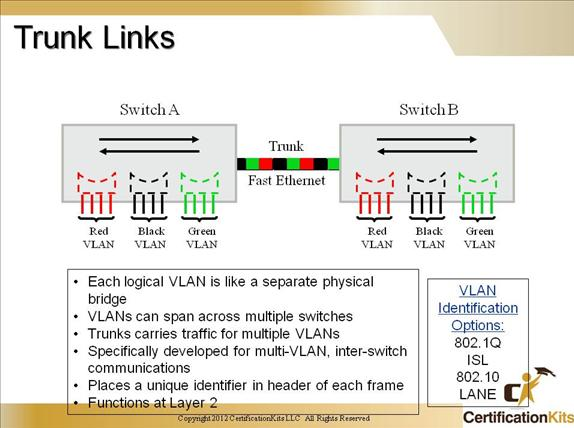Hey folks, I want to go through the next concept of trunks and how it ties into the previous topics and for you to have a holistic view of the simple concept of the switch features that I discussed.
So we now know that vlans reside in both access layer and core layer switches in it's own local databases however we haven't dealt with the communications of the vlans and how their traffic passes through.
This is where a trunk comes in, a trunk passes the vlan traffic from one switch database to the other. Trunks are created on normal ethernet ports and are usually created on the last 2 ports which are best practice.
Another function of a trunk is to limit the number of vlans passed from one switch to the other. To enable a trunk port varies from provider to provider therefore based on the brand you have, you would have a different set of commands to apply.
Hope this clears up trunking.
Regards,
@trev03
